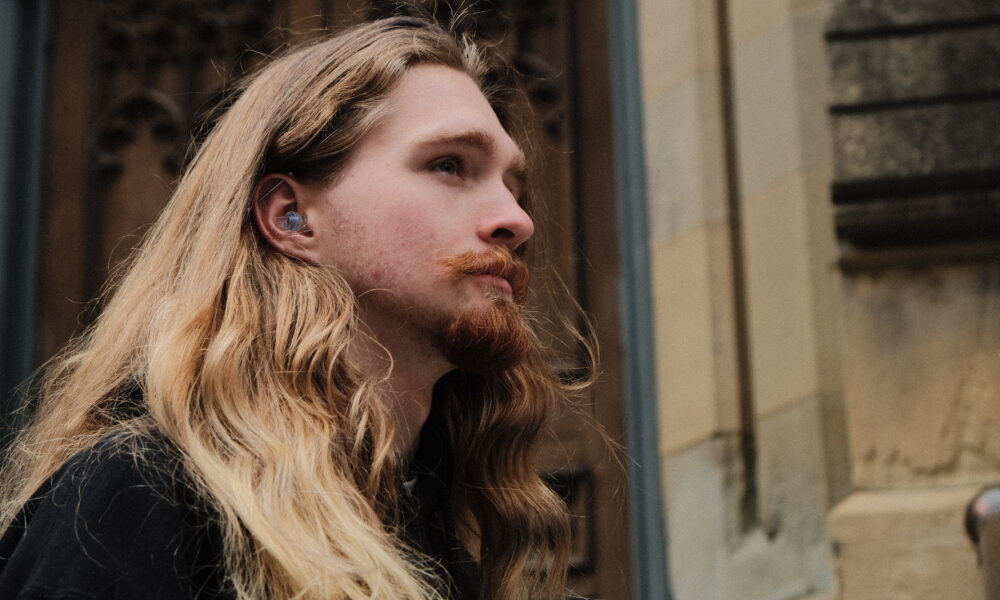Industrial noise levels frequently surpass 85 decibels, which is roughly equivalent to the noise a blender produces. Extended exposure to such noise levels can lead to long-term hearing damage, and earplugs are a common preventative measure to mitigate this risk. However, they are often either not worn at all or not used consistently, primarily due to comfort issues. This stems from the fact that conventional laboratory assessments of hearing protection are limited in their design and fail to replicate real-world conditions.
Olivier Valentin, a research associate in Neuroengineering at the Research Institute of the McGill University Health Centre, is committed to improving the quality of life for people with hearing disorders. A significant part of his research focuses on hearing loss prevention.
Valentin was diagnosed with bilateral moderate high frequency hearing loss while participating in a routine auditory screening. This moment sparked a profound interest for him to understand the functioning of the hearing system, ultimately shaping his future research career. During his postdoctoral fellowship at Université de Sherbrooke, he implemented a novel laboratory method to assess the multidimensional comfort aspects of different earplug families—roll-down foam, pre-molded foam, and push-to-fit—using fully immersive sound environments generated via virtual acoustics. Participants completed tasks designed to assess how well they could hear alarms and human speech, as well as answering questions about their comfort levels.
“The way it is done usually is through cost-effective laboratory evaluations. And the problem is these evaluations are not adequate to capture the multidimensional aspects of comfort, due to design limitations. They are not replicating real work conditions,” Valentin said in an interview with The Tribune.
As Valentin noted, the study assessed earplug comfort and efficiency across several dimensions in a simulated sound environment, with 96 speakers being used to mimic the acoustic environment of a loud workplace such as a factory. Objective tests—alarm detection and speech-in-noise perception—and questionnaires assessed the earplugs along the dimension of acoustic comfort, while additional surveys evaluated them along the dimensions of physical, functional, and psychological comfort.
The study found that the acoustic characteristics of the environment significantly impacted earplugs’ outcomes, particularly in terms of alarm detection and speech comprehension while wearing earplugs in high-noise settings This highlights the importance of tailoring earplugs recommendations to specific workplace environments to ensure effective alarm signals detection and better speech intelligibility.
This research also revealed that different types of earplugs affect comfort in distinct ways. Participants noted that push-to-fit and pre-molded earplugs caused less annoyance from internal sounds, such as the noises produced by eating and drinking, compared to roll-down foam. Roll-down foam and push-to-fit earplugs, on the other hand, led to less physical discomfort and pain than pre-molded ones.
Participants reported the physical dimension of comfort as the most important factor in evaluating earplugs, followed by functional aspects, with the acoustical dimension being the least prioritized factor. While earplug type had minimal effect on alarm detection, it did impact users’ ability to understand speech in noisy settings.
While the acoustical attenuation of earplugs is key to ensuring a proper level of protection, Valentin warned against overlooking comfort as people are more likely to consistently wear earplugs that are more comfortable.
“It’s critical not to overlook comfort when designing hearing protection devices,” Valentin noted. “Earplugs must effectively reduce exposure to harmful noise levels, but they also need to be comfortable to encourage consistent use.”
Although this research primarily focuses on workers in industrial settings, Valentin emphasized that harmful sound exposure is not exclusive to occupational settings. Everyday hobbies can pose similar risks. For instance, concerts often reach sound levels of 115 dB, while motorsports can exceed 140 dB—both well above the threshold for immediate hearing damage.
“There’s a common misconception that sound exposure is only a problem for workers in noisy industries, but our recreational activities can be just as dangerous,” Valentin explained. “Raising awareness is key. It’s essential to educate the public about hearing safety and promote preventative measures. Whether you’re at a concert, motorsport event, or engaging in any noisy activity, using hearing protection like earplugs or earmuffs—even for short periods—can make a significant difference.”
“Ultimately, prevention is about protecting your hearing today so you can enjoy it tomorrow,” Valentin added.
Since this interview, Valentin has joined the School of Communication Sciences and Disorders at Dalhousie University’s Faculty of Health as an Assistant Professor of Audiology. Students interested in pursuing a Master’s or Ph.D. project in the field of hearing sciences are encouraged to reach out to him at [email protected].






